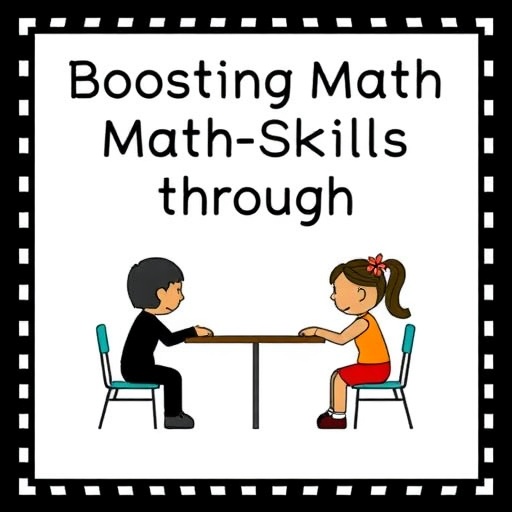Harnessing Collaborative Learning: The TWPS Method in Mathematics Education
In the ever-evolving realm of education, innovative teaching strategies are essential for fostering analytical skills, enhancing student engagement, and promoting academic confidence. Recent findings by researchers Rahman and Golamgouse-Toraub shed light on one such approach known as Think, Write, Pair, and Share (TWPS). This strategy is crafted to nurture students’ confidence in their abilities, bolster critical thinking, and deepen their understanding of complex mathematical concepts.
TWPS is not just a catchphrase; it is a dynamic educational model designed for interactive classroom engagement. The method begins with “think,” where students independently contemplate a mathematical problem or concept. This phase encourages individual thought processes, allowing students to engage without the immediate influence of their peers, fostering personal insights and interpretations. By giving students the time to ponder independently, the method seeds a foundation of self-confidence in approaching challenging subjects.
Following the individual thinking phase, students proceed to the “write” phase. Here, they document their thoughts and insights concerning the mathematical concept at hand. Writing allows students to articulate their reasoning and approach to a particular problem. Furthermore, this practice of written reflection serves as a gateway to clearer understanding and expression of mathematical thought, cultivating a sense of ownership over their learning.
The third stage, “pair,” amplifies the power of collaboration in the classroom. Students are paired together to discuss their written reflections, enabling them to exchange ideas and challenge each other’s thought processes. This not only enhances interpersonal communication skills among pupils but also aids them in refining their understanding by exposing them to diversely structured arguments or thought processes. Pairing up fosters an inclusive environment where students can learn from one another, guiding a richer comprehension of mathematical principles.
The final phase, “share,” allows students to present their thoughts and conclusions to the larger class. This component brilliantly encapsulates the essence of collaborative learning by inviting diverse perspectives into the discussion. By having students share their findings publicly, the method promotes a sense of community within the classroom where each student’s contributions are valued. This sense of belonging can significantly enhance motivation and engagement levels among students.
One of the most noteworthy outcomes of implementing the TWPS method is the marked increase in student confidence. As students navigate through the stages of thinking, writing, pairing, and sharing, they gradually become more assured in their mathematical abilities. This newfound confidence spills over into various aspects of their academic lives, motivating them to tackle more challenging problems head-on, thereby improving their overall performance in mathematics.
Moreover, the TWPS approach has been linked positively to the enhancement of critical thinking skills. Through peer discussions and collaborative exploration, students are encouraged to question, analyze, and evaluate ideas rather than merely accepting them at face value. This critical engagement with mathematical content not only prepares them for academic challenges but also equips them with the analytical skills necessary for real-world problem-solving scenarios.
In addition to building confidence and critical thinking skills, the TWPS method plays a crucial role in aiding students’ comprehension of mathematics. By interacting with materials in diverse ways, pupils can consolidate their learning effectively. The multi-faceted approach ensures that students are not merely memorizing algorithms but are genuinely understanding underlying mathematical concepts and principles.
Even more compelling is how this method can bridge the achievement gap among varied socio-economic backgrounds. It promotes a collective learning environment where all voices are heard, potentially leveling the playing field for students who may feel less competent or engaged in traditional teaching settings. By prioritizing participation and collaboration, TWPS may serve as a tool not only for increased academic success but also for empowering marginalized groups within education.
To further enhance its effectiveness, educators can tailor the TWPS strategy to cater to different learning styles and preferences. Some students may thrive in visual environments, benefiting from diagrams and graphic illustrations alongside written expressions, while others may benefit from auditory exchanges during pair discussions. By integrating technology, such as online collaborative platforms, educators can expand the reach of the TWPS method beyond the physical classroom, allowing for continued engagement in mathematical discourse.
Research like that of Rahman and Golamgouse-Toraub underscores the importance of effectively incorporating the TWPS method into curricula. The positive findings merit significant attention from educational policymakers and practitioners alike who might seek to adopt or adapt this innovative pedagogical approach.
The ongoing research serves as a reminder that the education sector must continually evolve to engage students meaningfully. The TWPS method illustrates that active participation and collaboration are not mere strategies, but foundational elements critical to cultivating confident, capable, and competent learners in the field of mathematics.
The potential impact of the TWPS method has broader implications for shaping curricula that are more equitable, inclusive, and conducive to comprehensive learning. Educators are encouraged to remain flexible and responsive to students’ needs, allowing them to explore mathematical concepts through a communal lens. Just as mathematics is not a solitary venture, the path to understanding it should foster dialogue, engagement, and shared discovery.
As educational paradigms shift to place increased emphasis on student agency and collaborative learning, strategies like TWPS will likely gain prominence. With an evidence-backed methodology emerging from recent studies, the educational community is poised to embrace this transformative approach, propelling learners towards greater heights in their mathematical journeys.
Subject of Research: The impact of a think, write, pair, and share (TWPS) activity on pupils’ confidence, critical thinking, and understanding of mathematics lesson.
Article Title: The impact of a think, write, pair, and share (TWPS) activity on pupils’ confidence, critical thinking, and understanding of mathematics lesson.
Article References: Rahman, S.U., Golamgouse-Toraub, H. The impact of a think, write, pair, and share (TWPS) activity on pupils’ confidence, critical thinking, and understanding of mathematics lesson. Discov Educ 4, 489 (2025). https://doi.org/10.1007/s44217-025-00852-5
Image Credits: AI Generated
DOI: https://doi.org/10.1007/s44217-025-00852-5
Keywords: Think, Write, Pair, Share, Mathematics Education, Student Confidence, Critical Thinking, Collaborative Learning.




